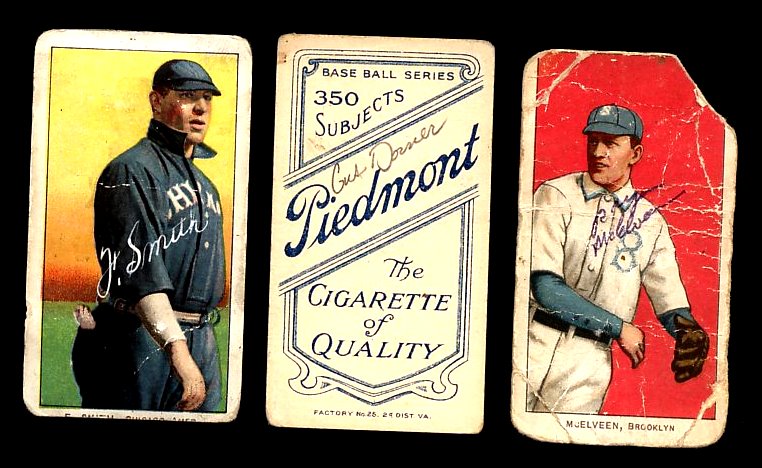My endless pursuit of autographed T206 cards often forces me to buy cards that have not been authenticated. Frequently, a signature is convincing, even though I am unable to find any examples of the signature against which to compare it. And the seller isn't making forgeries, he's just selling a card that has definitely been signed by someone -- perhaps even the player himself. The problem is, not only can't I find an exemplar -- neither can PSA/DNA or JSA. In fact, the sad truth is, some signatures are so obscure that even if they were genuine, the experts can't confirm it or deny it. They can only tell you the factors that suggest it could be real, and the reasons they think it might be fake.
The three examples below fall into this category. I absolutely love the Frank Smith, which has been artfully signed in white by someone with a smooth hand. James Spence took a picture for his files, but had nothing against which to compare it. Maybe one day, an identifying exemplar of Smith's will turn up and uncover whether this is the genuine article or not.
The McElveen is an ugly card with an interesting signature. It doesn't have the traditional hallmarks of a fake, as it is small and unassuming. However, given that McElveen died in 1951, this gave McElveen precious few years to sign T206 cards in ballpoint - as this one was - since ballpoint pens only came into vogue shortly after World War II. PSA/DNA found the signature to have questionable authenticity, and JSA couldn't authenticate it either. The reason? Again, nothing against which to compare it.
Finally, good old Gus Dorner. This one is pretty clearly just an identifying mark of a collector, who wanted for some reason to put the player's full name on the back of his card in pencil. However, if it were real, we wouldn't be able to authenticate it -- this is a Minor League card of a player who played sporadically in the Majors only through 1909. Again, no exemplars available.
So what do you do when you come across signed cards that can't be authenticated by anyone? If a player signed few autographs during his lifetime, that makes them rare -- and valuable, but only if the signature can be confirmed as real. Ironically, the rarer the signature, the less valuable it can become. If there's only one -- and there were no witnesses -- then how do you know it is real at all?
